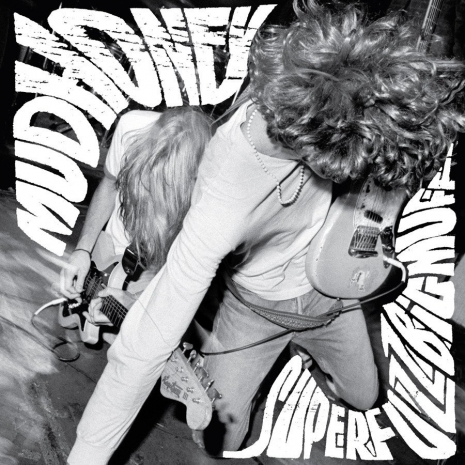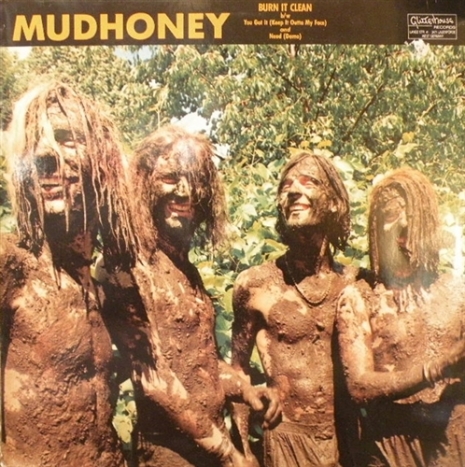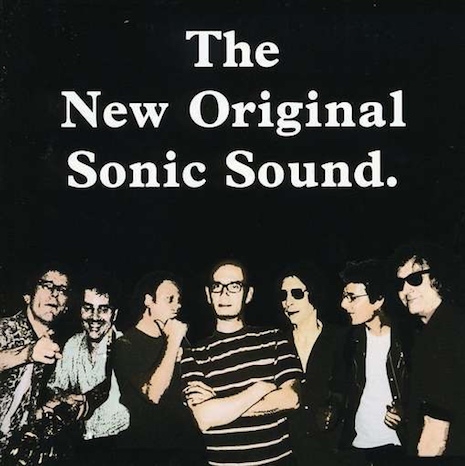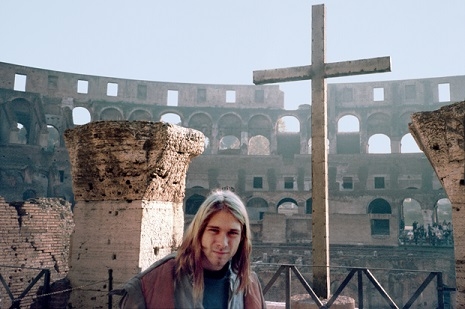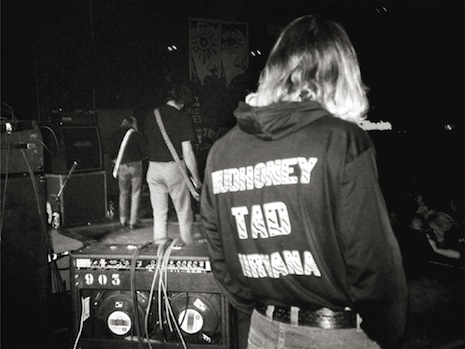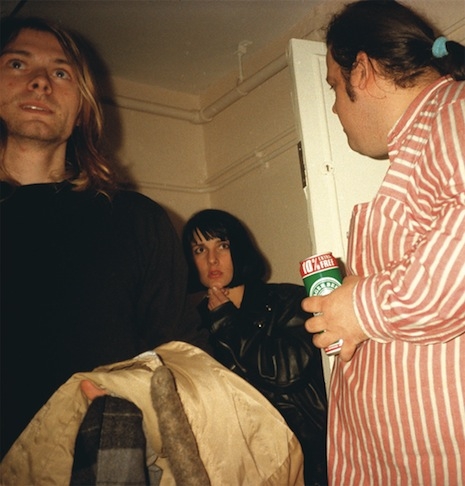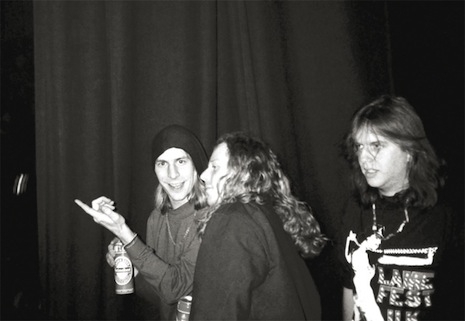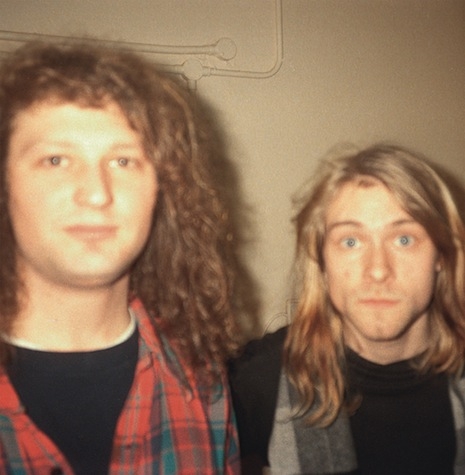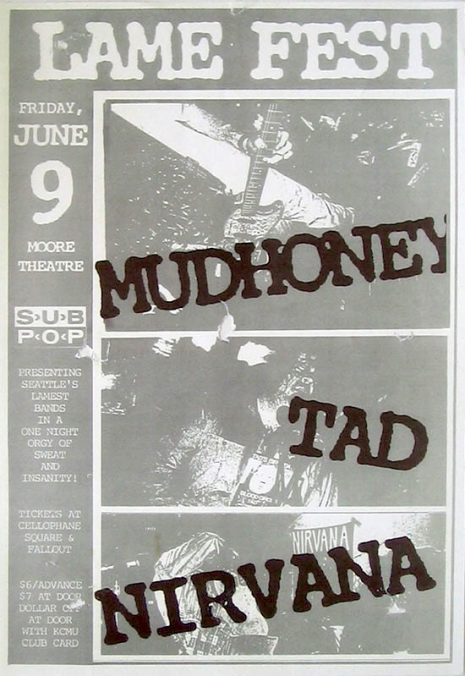
Sub Pop is one of the most important and influential American record labels. Started in 1988 by Jonathan Poneman and Bruce Pavitt, and based in Seattle, Sup Pop put out early recordings by such groups as Mudhoney, the Afghan Whigs, the Flaming Lips, Soundgarden, the Screaming Trees, and Nirvana. Poneman and Pavitt not only have good taste and a keen sense for what will sell, but are also masters at branding and marketing. For example, their Sub Pop Singles Club, in which subscribers willingly fork over their money with no prior knowledge of the participating bands, was a game changer, and the label came up with a t-shirt with the word “Loser” emblazoned across the front, and the Sub Pop logo on the back. The shirt is now iconic.
On June 9, 1989, Sub Pop’s “Lame Fest” was held at the Moore Theater in Seattle. Nirvana, Mudhoney, and another young Sub Pop group, TAD, were on the bill. It was a wild night, with the bands and the crowd battling the security guards.

Dangerous Minds has an excerpt from the upcoming Gillian G. Gaar book, World Domination: The Sub Pop Records Story, in which details of the event are told. The passage also gets into the second Lame Fest, as well as the Nirvana contract, insisted upon by the band, that would one day benefit the label. The text begins with reference to the recent attention Sub Pop acts had received in the British press.
Sub Pop’s profile was further heightened stateside at the label’s first “Lame Fest,” held on June 9 at Seattle’s Moore Theatre, featuring Nirvana, TAD, and Mudhoney and billed as “Seattle’s lamest bands in a one-night orgy of sweat and insanity!” Initially, there had been doubts that the show would make any money; local bands played clubs, not a fifteen-hundred-seat theater. But the concert ended up selling out.
“Booking the Moore was an epic gesture, which is how we did things,” Bruce Pavitt notes with pride. “The bands were killing it live, so we knew Seattle would go o if we could get people there. The theater’s manager let most of his security staff go prior to the show, thinking that nobody would show up. And there was complete pandemonium. Google those YouTube videos, kids, it’s an epic moment!” The show doubled as a release party for Nirvana’s first album, Bleach (the first thousand copies on white vinyl).

Nirvana had also recently become the first act to sign a record contract with Sub Pop. Earlier in the year, Nirvana bassist Krist Novoselic had turned up at Bruce’s house one evening, demanding a written contract; previously, Sub Pop had only made verbal agreements with its artists. Jon [Poneman] hastily drafted a one-year contract, with options for two further years; the contract was signed on June 3 but backdated to January 1, 1989. “Righteous heaviness from these Olympia pop stars,” was the Sub Pop catalog’s assessment of Bleach. “They’re young, they own their own van, and they’re going to make us rich!”
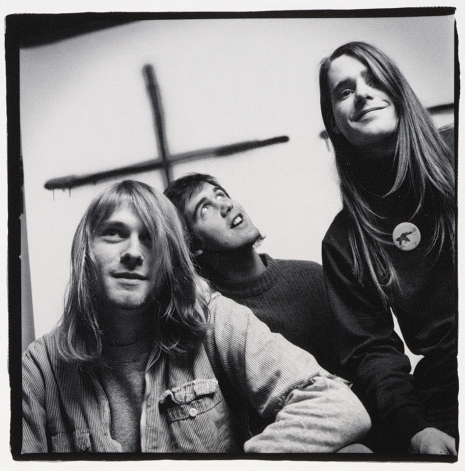
The success of the first Lame Fest led to a second one being held overseas. “Jon and I had very little resources but a lot of enthusiasm at that time,” Bruce recalls. “And we were constantly brainstorming and trying to piece together strategies that would help convince the rest of the world that Seattle had an amazing rock scene. Once we saw that model work in Seattle, we were really dead set on getting all three bands playing in London and getting as many press people and photographers there as possible.”
With Nirvana, TAD, and Mudhoney all touring the UK and Europe that fall, a Lame Fest date was arranged for December 3 at London’s Astoria Theatre. Bruce cites the concert as “a true turning point in the international stature of the Seattle music scene.”
Much more after the jump…







